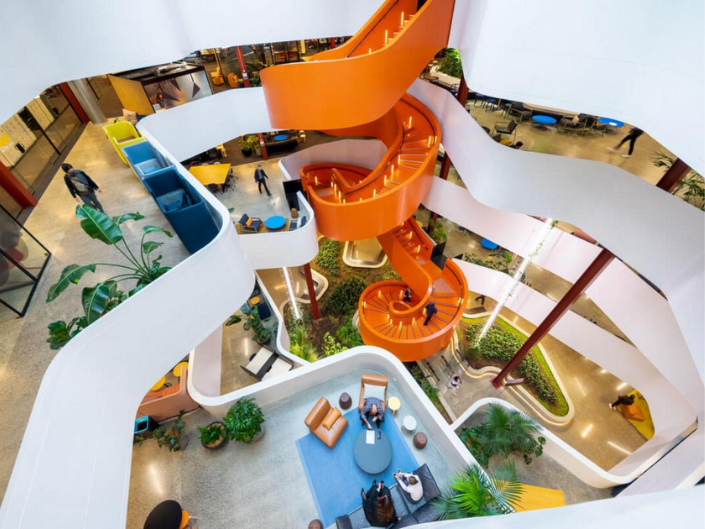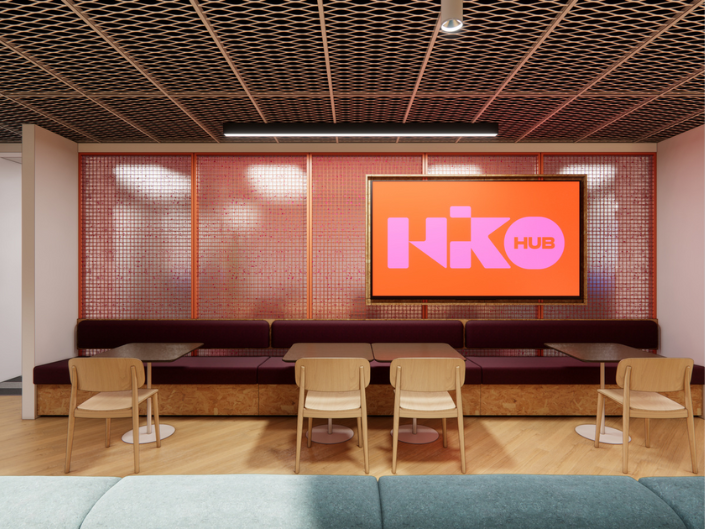A Guide to Setting Up Your Coworking Space
- Details
How to Launch, Scale, and Succeed in the World of Flexible Workspaces
Coworking isn’t just about shared desks anymore; it’s about community, flexibility, and supporting how people want to work today. As hybrid models become the norm and businesses search for agile office solutions, New Zealand’s coworking market is thriving.
But setting up a coworking space takes more than just finding a location and adding furniture. It involves understanding the market, your potential members, and what makes a workspace not just functional, but magnetic. Whether you're a landlord, a start-up founder, or a seasoned operator expanding into new territory, this guide, grounded in insights from the 2025 Sharedspace Coworking & Flex Space Report, will walk you through the key steps to launching a successful coworking space in Aotearoa.
B:HIVE | Takapuna
Why Start a Coworking Space
Before diving into logistics, it’s important to know why coworking spaces are gaining traction in New Zealand:
Growth: Despite economic headwinds, the coworking sector grew by 6% in 2024, with over 205 flexible workspaces now active across the country.
Corporate demand: More large businesses are seeking flexible solutions. The average coworking business size is five people, and private office occupancy rates are at 80% nationwide.
Hybrid work adoption: The average resident now uses their coworking space 3.4 days per week, with Tuesday the busiest day.
Increased hotdesking: Hotdesk memberships jumped by 18%, reflecting demand for part-time, pay-as-you-go setups.
In short, it’s a resilient and evolving market if you get your setup right.
Step 1: Define Your Vision and Audience
Not all coworking spaces are created equal. Start by asking yourself:
- Who do I want to attract? Tech start-ups? Health and wellness professionals? Corporate teams?
- What kind of work experience am I offering? Professional and quiet? Creative and casual? Community-focused and event-rich?
Niche spaces are gaining popularity - think wellness hubs, fintech labs, or creative studios. Being clear on your purpose will guide every decision from layout to marketing.
Panama East | Hamilton
Step 2: Understand Your Costs
Cost is one of the biggest variables in the coworking equation. According to the 2025 Sharedspace report, the average monthly price per person is:
- Private office: $882
- Permanent desk: $640
- Hotdesk membership: $340
- Casual hotdesk (daily): $40
Typical upfront costs might include:
- Lease or purchase of premises
- Fit-out and design
- Furniture, tech infrastructure, and security systems
- Marketing and launch
- Ongoing staffing and cleaning
- Insurance and utilities
💡 Tip: Consider starting with a management agreement or profit-share with landlords to reduce upfront investment.
Step 3: Choose the Right Location
Location is crucial. Your space should strike a balance between accessibility and affordability.
Consider:
- Proximity to public transportation
- Parking availability
- Nearby cafes and lifestyle amenities
- Ground floor or elevator access for equipment
- Walkability and safety
Some of New Zealand’s strongest coworking growth is occurring in Auckland, Canterbury, and Northland, with smaller regions such as Nelson-Tasman and Waikato also gaining traction.
JOLL Commons | Hawkes Bay
Step 4: Plan Your Layout and Amenities
Coworking isn’t just about desks. It’s about how people move, meet, and feel in a space.
Common elements to include:
- Hotdesks
- Permanent desks
- Private offices
- Meeting rooms and call booths
- Event or breakout spaces
- Kitchen and social hub
- Wellness areas or nap pods
Top amenities NZ coworking members love:
✔ 24/7 access
✔ Meeting spaces
✔ Fast internet and printing
✔ Call booths
✔ Dog-friendly policies
✔ Kitchen snacks and free coffee
Think about your density too. The average NZ coworking space is 930m² with a median of 580m². Consider flow, noise control, and natural light.
Step 5: Pricing and Memberships
Build pricing that reflects your offering and flexibility:
- Hotdesk memberships (shared desks, bookable or drop-in)
- Dedicated desks (permanent desk in an open plan)
- Private offices (lockable, furnished, branded options)
- Virtual offices (mail and phone services only)
💡 Tip: Use a blend of casual rates and long-term membership rates. The 2025 report notes a rise in 12-month agreements, but many still offer monthly or 6-month terms to attract smaller teams.
Servcorp | Auckland
Step 6: Invest in Community and Culture
Coworking thrives on connection. According to Sharedspace's report:
- 78% of coworking providers host social events
- 53% host events monthly, 22% weekly
Great coworking spaces feel alive. Ideas include:
- Monthly breakfasts or happy hours
- Member-led workshops
- Wellness classes
- Slack or WhatsApp groups
- Member spotlights on social media
💡 Consider hiring a dedicated community manager to help cultivate relationships and engagement.
Step 7: Market Your Space
You’ve got the space, now get the people.
List your space on platforms like Sharedspace.co.nz, New Zealand’s leading marketplace for coworking and flexible workspaces. With over 500,000 annual visitors and a proven track record, it’s an easy way to get quality enquiries quickly.
Also consider:
- SEO-optimised website with photos, pricing, and enquiry forms
- Google Business listing with reviews
- Social media (Instagram, LinkedIn, Facebook)
- Paid ads (Meta, Google, LinkedIn)
- Partnerships with nearby businesses or start-up communities
- Host networking events in your space
💡 Tip: Highlight your community, values, and what makes your space special... not just the desks.
Omada | Christchurch
Step 8: Set Up Tools & Tech
Efficiency matters. Today’s coworking spaces rely on software to run smoothly.
Look for:
- Smart booking systems for desks and meeting rooms
- Member management platforms
- Access control systems (keycards, apps)
- Wi-Fi and printer management
- Feedback forms or NPS tools
AI-driven workspace management is an emerging trend, helping optimise bookings, pricing, and even staffing.
Step 9: Monitor Performance
Once launched, keep an eye on:
- Occupancy rates (aim for 80%+ occupancy)
- Member retention
- Revenue vs. cost ratio
- Member satisfaction and engagement
- Community health (event attendance, referrals)
Monthly check-ins and member surveys can help you adapt to shifting needs. Coworking is dynamic - don’t be afraid to tweak layouts, pricing, or perks based on feedback.
Centred Studios | Christchurch
Step 10: Plan for the Future
The 2025 coworking outlook is bright:
- 40% of NZ operators plan to expand within two years
- Larger companies are moving in
- Landlord-led coworking is on the rise
- Niche, community-first spaces are booming
As the market matures, your success will hinge on agility, hospitality, and a clear sense of purpose.
Coworking Is More Than a Desk
Setting up a coworking space isn’t just about real estate; it’s about people. It’s about understanding how professionals want to work, connect, and feel when they walk through your doors.
By following the steps above and staying in tune with New Zealand’s coworking trends, you’ll be well-positioned to build a vibrant, profitable, and future-proof space.
Whether you're launching your first space or your fifth, one thing remains clear: in 2025 and beyond, coworking isn’t just a fad. It’s the future of work.
download 2025 Coworking report









